Making a Large Poster With Vector Graphics
by calischs in Living > Decorating
25223 Views, 61 Favorites, 0 Comments
Making a Large Poster With Vector Graphics
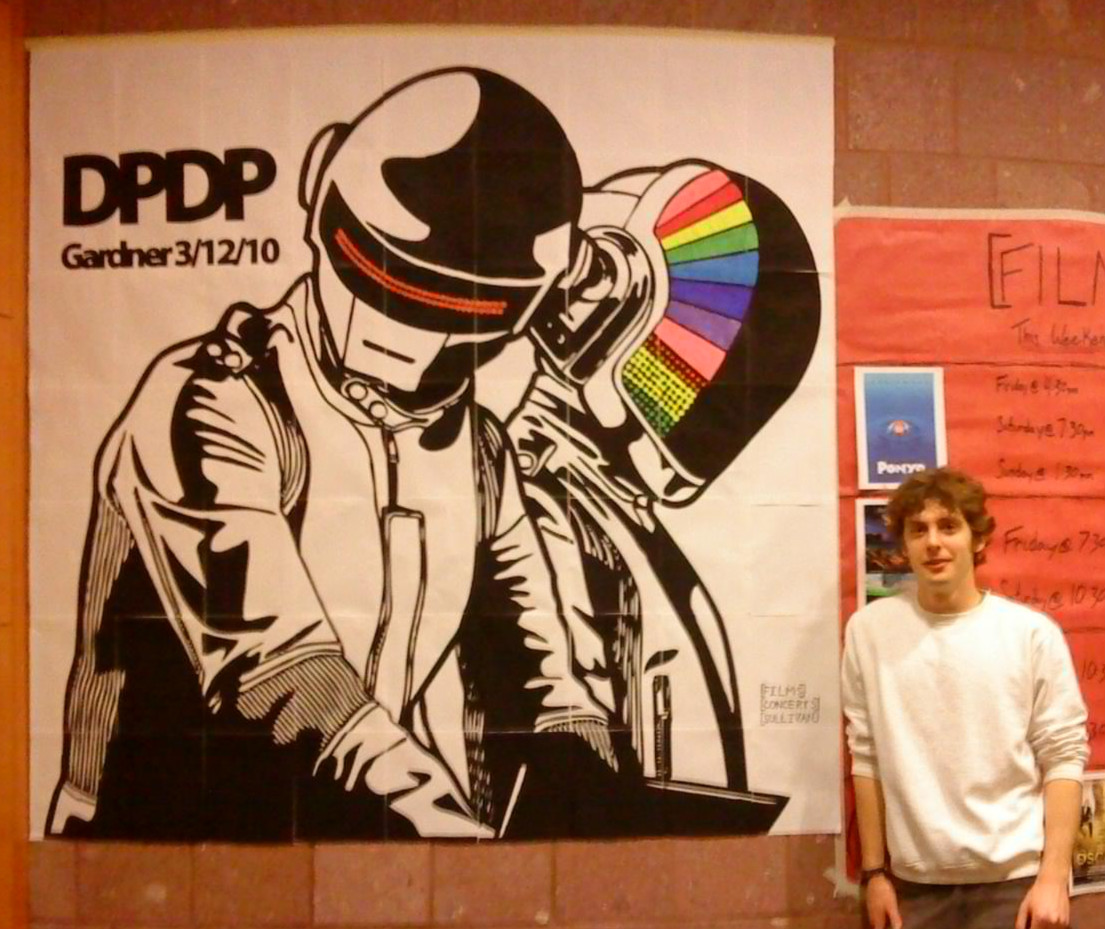
I love the Rasterbator, but I also love the crispness of vector graphics sometimes. Why not create a large Rasterbation-like poster with exact lines and shapes? It's actually really easy.
I used this technique to create a big poster for a Daft Punk dance party my friends and I were throwing. I was really happy with the output, and the night before the event someone even stole the poster. That's a compliment in my book!
Sorry for the quality of the photo of the final product -- We finished at 2AM and were really tired.
You'll Need:
-An image (most any format, but if it's already a vector (PDF, EPS, SVG, etc.) you can skip some steps).
-Laser printer: Preferably one where you don't have to pay per page. Depending on your image, you will use a lot of toner, so keep that in mind.
-Paper cutter (scissors will work, but will take much longer)
-Scotch Tape
-Markers, Colored Pencils, Crayons, etc. (optional): Adding color accents can really have some outstanding effects.
-Software: Here we have some choices:
-Adobe Suite: This is expensive software but the way to go if you can. I had access through my school, so check on that if you are associated with an institution. I used Photoshop, Illustrator, and Acrobat.
-Open Source Software: You can definitely accomplish this Instructable using only open-source software. Try GIMP for raster manipulations and Inkscape for vector tracing, manipulations, and tile printing.
-Web-Based: if for some reason you don't want to download a bunch of new software, you should be able to use web services exclusively. The only downside is that (as far as I know) there aren't too many web based resources for editing vector graphics. You could use Photoshop.com (requires creation of a free AdobeID) for raster work, and Vector Magic (or Potrace) to do a vector trace of raster images. I haven't done this, so let me know if you find a good workflow.
I used this technique to create a big poster for a Daft Punk dance party my friends and I were throwing. I was really happy with the output, and the night before the event someone even stole the poster. That's a compliment in my book!
Sorry for the quality of the photo of the final product -- We finished at 2AM and were really tired.
You'll Need:
-An image (most any format, but if it's already a vector (PDF, EPS, SVG, etc.) you can skip some steps).
-Laser printer: Preferably one where you don't have to pay per page. Depending on your image, you will use a lot of toner, so keep that in mind.
-Paper cutter (scissors will work, but will take much longer)
-Scotch Tape
-Markers, Colored Pencils, Crayons, etc. (optional): Adding color accents can really have some outstanding effects.
-Software: Here we have some choices:
-Adobe Suite: This is expensive software but the way to go if you can. I had access through my school, so check on that if you are associated with an institution. I used Photoshop, Illustrator, and Acrobat.
-Open Source Software: You can definitely accomplish this Instructable using only open-source software. Try GIMP for raster manipulations and Inkscape for vector tracing, manipulations, and tile printing.
-Web-Based: if for some reason you don't want to download a bunch of new software, you should be able to use web services exclusively. The only downside is that (as far as I know) there aren't too many web based resources for editing vector graphics. You could use Photoshop.com (requires creation of a free AdobeID) for raster work, and Vector Magic (or Potrace) to do a vector trace of raster images. I haven't done this, so let me know if you find a good workflow.
Working With Your Raster Image
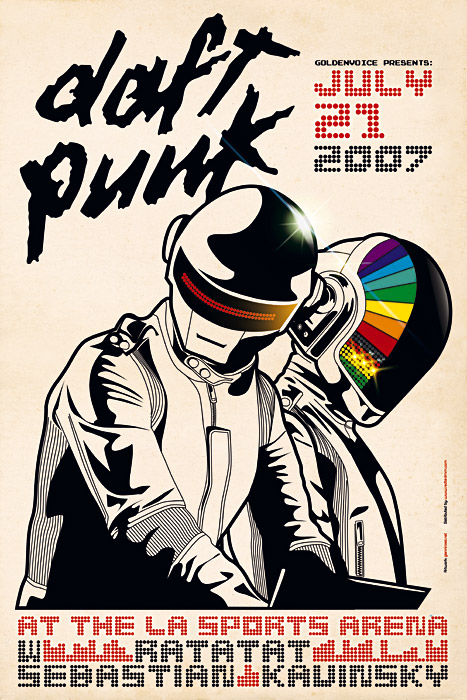
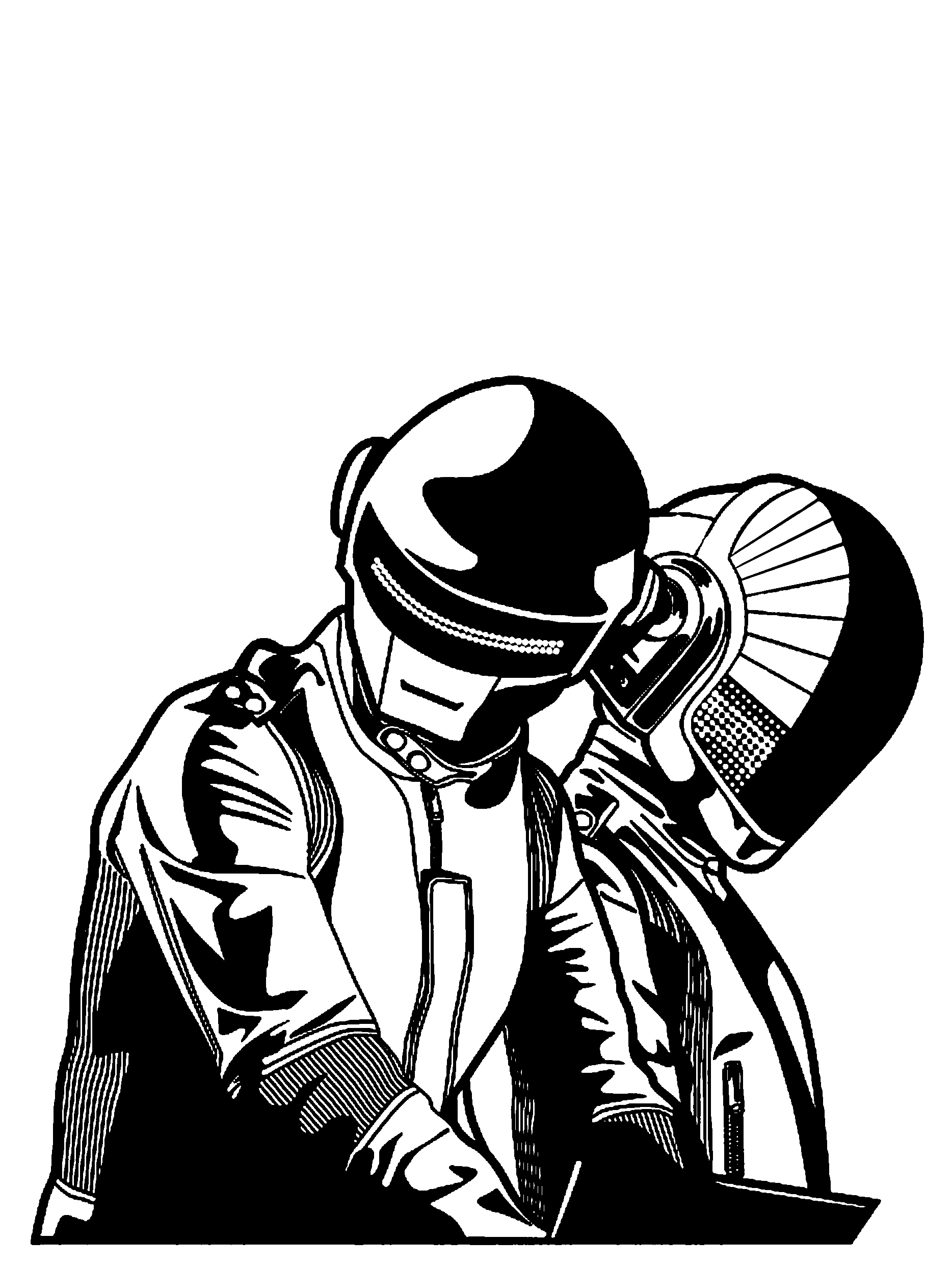
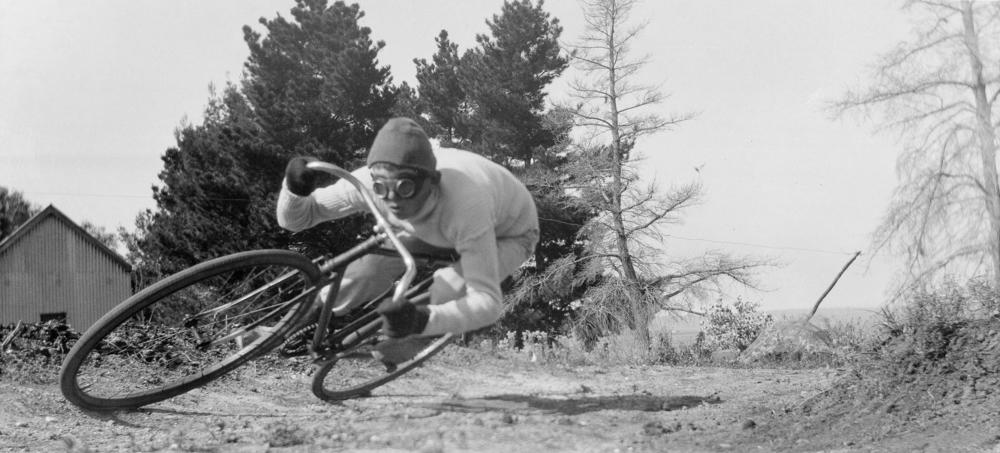
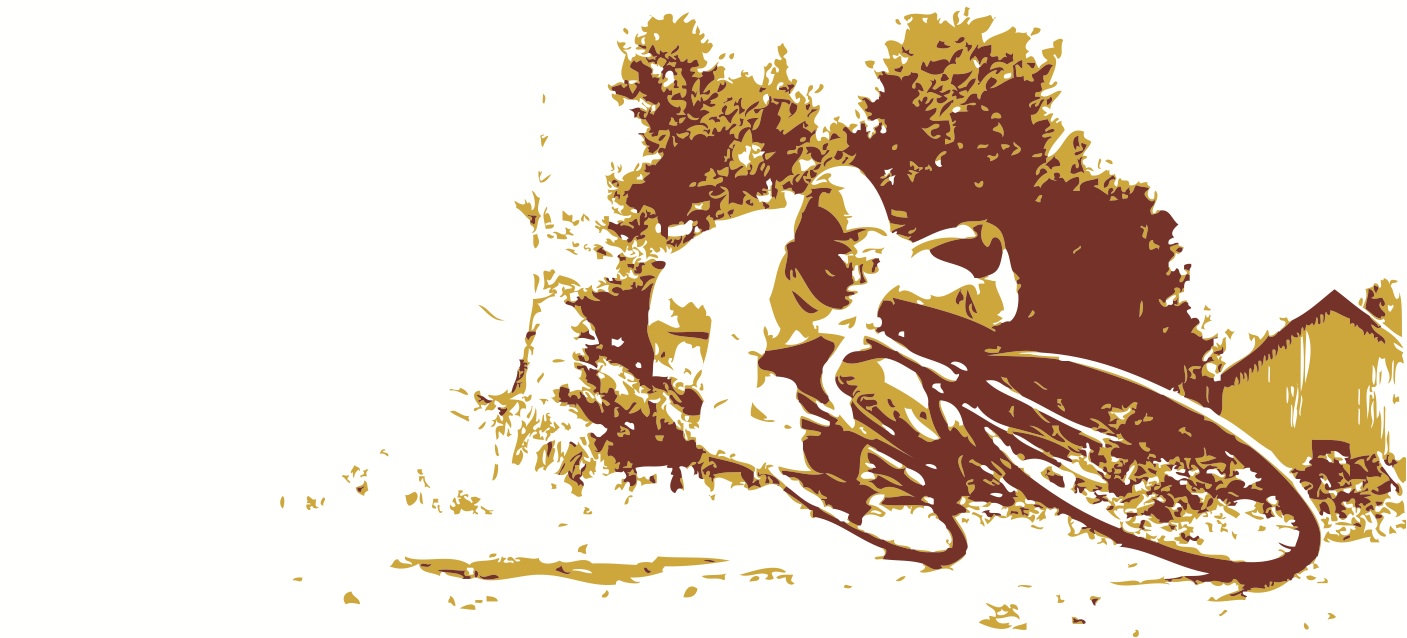
In order to prepare the raster image for a vector trace, it helps to create a simple black and white image (no grayscale) without losing important parts of the image. The easiest way to do this is:
-Eliminate any unwanted parts of the image,
-Increase contrast to maximum,
-Adjust the brightness to keep desired details,
-Manually retouch tricky spots.
Depending on the image, this can be straightforward or require a bunch of work. So pick your image carefully. My image (found via Google Image Search) already incorporated some crisp lines, so this step was relatively easy. I got rid of the color and took out all the type. The reflections on DP's helmets were my only challenge, and required going back over those parts of the image with a black paintbrush. You really shouldn't feel restricted to vector-like images, though. You can get some great results from plain old photographs. Check out the vector trace I did of this old biking photo (also from Google).
-Eliminate any unwanted parts of the image,
-Increase contrast to maximum,
-Adjust the brightness to keep desired details,
-Manually retouch tricky spots.
Depending on the image, this can be straightforward or require a bunch of work. So pick your image carefully. My image (found via Google Image Search) already incorporated some crisp lines, so this step was relatively easy. I got rid of the color and took out all the type. The reflections on DP's helmets were my only challenge, and required going back over those parts of the image with a black paintbrush. You really shouldn't feel restricted to vector-like images, though. You can get some great results from plain old photographs. Check out the vector trace I did of this old biking photo (also from Google).
Converting to Vector
If you did a good job in the last step, this should be relatively easy. You can do this automatically or by hand for simpler images. In Illustrator, the tool to trace a raster image automatically is called LiveTrace, located in the Object menu. There are lots of options that determine how exactly to trace the image. For example, if your image is pixelated, you can tell Illustrator to smooth out the jagged pixel edges in its trace.
Once you have a vector format, you can experiment with additions or modifications. I played around with color on DP's helmets, and added text. When you are happy with your image, go to File>Save a copy, and save a PDF. Remember to make it only black and white (if you are working with a laser printer).
It is possible to run LiveTrace on an unprepared (color) raster, but I find the results are better when you do your modifications beforehand. For example, you can touch up any smaller tricky spots in Photoshop, but the tracing controls in Illustrator are (as far as I know) global only.
Once you have a vector format, you can experiment with additions or modifications. I played around with color on DP's helmets, and added text. When you are happy with your image, go to File>Save a copy, and save a PDF. Remember to make it only black and white (if you are working with a laser printer).
It is possible to run LiveTrace on an unprepared (color) raster, but I find the results are better when you do your modifications beforehand. For example, you can touch up any smaller tricky spots in Photoshop, but the tracing controls in Illustrator are (as far as I know) global only.
Downloads
Tile Printing and Assembly
Once you've created your vector image, you can scale it up to any size you want without loosing detail. Just keep in mind how many sheets of paper it will require. The printable area is a bit less than 8.5x11, so figure this into your calculations. In the Acrobat print menu, under the Copies and Pages dialog, there is a drop-down menu for Page Scaling. Choose Tile All Pages.
After you print it, trim the edges and start taping it together. We taped ours in strips first, and then taped the strips together. We taped on the reverse sides to hide the tape, but this made lining up the images a little more difficult. I would recommend finding a light table so you can see through the sheets.
Our poster was 70 sheets, which took my friend and I a couple hours to to trim and tape (though I think we probably could have done it faster).
That's really about it -- not too difficult. Please post any cool posters or spin-off ideas.
After you print it, trim the edges and start taping it together. We taped ours in strips first, and then taped the strips together. We taped on the reverse sides to hide the tape, but this made lining up the images a little more difficult. I would recommend finding a light table so you can see through the sheets.
Our poster was 70 sheets, which took my friend and I a couple hours to to trim and tape (though I think we probably could have done it faster).
That's really about it -- not too difficult. Please post any cool posters or spin-off ideas.